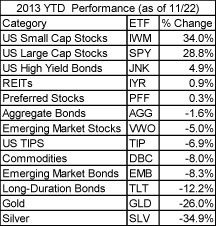“The intellect is always fooled by the heart.” - Francois de La Rochefoucauld
Of all the cognitive biases that influence human behavior, recency bias is by far the most harmful to long-term investors. This is the tendency for investors to project their most recent experience into the future. In doing so, investors are assuming that what has occurred in the recent past will continue to occur indefinitely. At the same time, investors are also assuming that if something hasn’t occurred in the recent past, it won’t happen in the future.
Given these assumptions, recency bias is particularly damaging following outlier years or periods of extreme market behavior. Given the upward bias of markets over time, reacting to a downside outlier year can be particularly damaging. The most recent example of this occurred in 2008, when the S&P 500 declined over 38% and volatility spiked to levels not seen since the Great Depression. Out of the 500 stocks in the S&P 500, 471 finished lower in 2008.
By the time the S&P 500 bottomed in March of 2009 it had declined 57% from its peak in October 2007 and had traded back to levels not seen since 1996, 13 years earlier. By this point, many investors had bailed on stocks in favor of investments that had performed well during the bear market, namely treasury bonds. Stocks had been going down for so long that investors had completely written off the possibility of a turnaround in 2009, or even a return to a more normal environment.
Of course, we all know what happened next. The market reversed sharply at the March low and the S&P 500 finished 2009 up over 23%. Volatility plummeted back to historical averages by the end of the year as a new economic expansion had begun. Investors who had succumbed to recency bias and abandoned stocks in favor of bonds and cash were once again fooled by an outlier.
In 2013, we have seen the opposite of 2008 in many respects. It has also been an outlier year for US equities, only this time to the upside. Some examples:
- The S&P 500 is currently up over 26% this year (28% on total return basis), on pace for its best year since 1997.
- The S&P 500 has only suffered one correction greater than 5% this year, a 7.5% pullback in May-June that was quickly reversed (new highs by mid-July). Since 1928, on average there have been 3.5 corrections per year.
- The S&P 500 has been up on 60% of the days in 2013, the most since 1995 and significantly higher than the historical average of 52%.
- Within the S&P 500, 460 stocks are positive in 2013 (92%), one of the highest percentages in history. There are more stocks in the S&P 500 that are up over 65% year-to-date than are down.
- The S&P 500 has traded above its 200-day moving average for the entire year, a very rare occurrence that last happened in 1995.
The behavioral effect of these facts is significant. Investors today are projecting this smooth, broad advance into future as if it were the base case scenario, not an outlier year. Compounding this recency bias is the poor performance in other asset classes in 2013. When looking at the table below, it becomes clear that US equities are the only game in town for investors focused on recent performance.

Given this backdrop, it is not surprising that investors are pouring money into US stock funds at the fastest rate since 2000. The prevalent buzzwords have completely shifted from 2008 and 2009. Long only and buy and hold are now back in vogue while asset allocation and risk management have been rendered useless.
What is an investor to do?
While no one can accurately forecast what is going to happen in 2014, it is highly improbable that it will mirror 2013. Investors that are chasing performance in US equities with the expectation that they will continue at a similar pace and trajectory in 2014 are likely to be disappointed. Often the best a long-term investor can do is to align themselves with historical probabilities and try to tune out recent performance as much as possible.
In 2008/09, that meant staying the course and continuing to add to stocks on weakness when everyone else was panicking. Today, this means not abandoning all risk management and asset allocation in the hopes that US stocks will continue to trump all other asset classes to the extent they did this year.
For investors that remain unconvinced that today’s environment is not likely to continue, I would ask you to try to remember your feelings on Gold at the end of last year. How many of you would have predicted a 26% decline in the yellow metal after 12 straight positive years and the Federal Reserve maintaining its loosest monetary policy in history?
This writing is for informational purposes only and does not constitute an offer to sell, a solicitation to buy, or a recommendation regarding any securities transaction, or as an offer to provide advisory or other services by Pension Partners, LLC in any jurisdiction in which such offer, solicitation, purchase or sale would be unlawful under the securities laws of such jurisdiction. The information contained in this writing should not be construed as financial or investment advice on any subject matter. Pension Partners, LLC expressly disclaims all liability in respect to actions taken based on any or all of the information on this writing.





